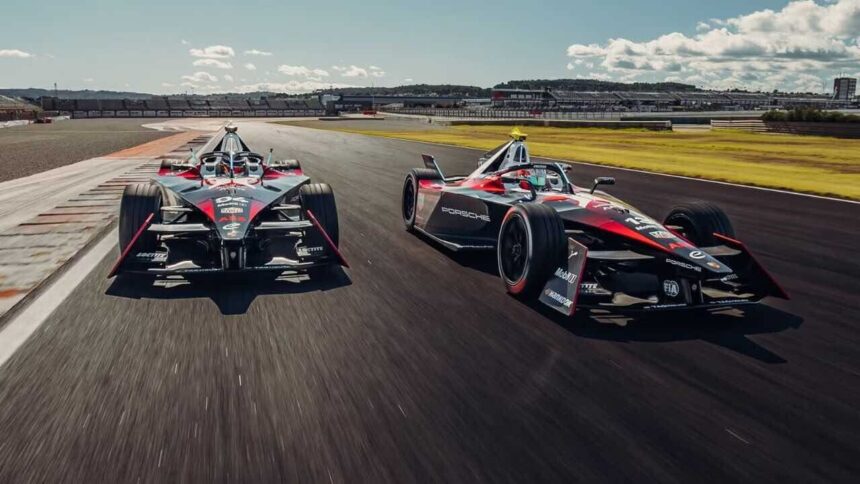Formula E has emerged as one of the most revolutionary motorsport series in the world, showcasing the potential of electric racing technology while setting new benchmarks for sustainability. Since its inception, this all-electric championship has captivated audiences and automotive enthusiasts alike, pushing the envelope of performance, innovation, and eco-friendly advancements in motorsports.
The Birth of Formula E: A New Era of Racing
The idea of an all-electric racing series was conceived in 2011 by FIA President Jean Todt and Alejandro Agag, a Spanish businessman who would go on to become the founder and chairman of Formula E. Their vision was to create a championship that would not only deliver thrilling on-track action but also serve as a testing ground for electric vehicle (EV) technology, accelerating the transition toward a more sustainable automotive future.
Formula E officially launched in 2014 with its inaugural season in Beijing. Unlike traditional motorsports, which often take place on permanent circuits, Formula E events are held on temporary street circuits in major cities worldwide. This decision not only brings the action closer to fans but also highlights the importance of sustainable urban mobility solutions.
Technological Innovations in Formula E
One of the primary objectives of Formula E is to serve as a catalyst for EV innovation. The championship has provided manufacturers with an opportunity to develop and refine cutting-edge technologies that eventually make their way into consumer electric vehicles. Over the years, advancements in battery efficiency, powertrains, and energy management systems have significantly improved the performance and range of electric race cars.
The second generation (Gen2) cars, introduced in 2018, marked a major leap forward in electric racing. These vehicles featured a more powerful battery, eliminating the need for mid-race car swaps that were common in the early seasons. With increased power output, enhanced aerodynamics, and greater durability, Gen2 cars showcased the rapid evolution of electric motorsport. The upcoming Gen3 cars promise even more innovation, with lighter frames, increased regenerative braking capabilities, and improved efficiency.
Sustainability and Environmental Commitment
Formula E is not just about racing—it’s a mission-driven championship focused on sustainability. Unlike traditional motorsports that rely on fossil fuels, Formula E runs entirely on renewable energy sources, reducing its carbon footprint. The championship also follows strict environmental policies, ensuring minimal waste and promoting carbon neutrality.
From using fully sustainable materials in car manufacturing to enforcing stringent recycling programs, Formula E is at the forefront of green racing initiatives. Furthermore, the series has partnered with various organizations to drive awareness of climate change and the need for clean energy solutions.
Competitive Racing and Global Fan Engagement
Despite being a relatively new motorsport series, Formula E has gained immense popularity due to its highly competitive nature. With some of the world’s top automakers, including Porsche, Jaguar, Nissan, and Mercedes-Benz, participating in the championship, the level of competition continues to rise each season. The unpredictability of races, coupled with the ever-evolving technology, keeps fans on the edge of their seats.
Another key aspect of Formula E’s success is its fan-centric approach. The introduction of FanBoost—a feature that allows fans to vote for their favorite driver to receive a power boost during races—has created a more interactive experience. Additionally, the championship’s presence in major metropolitan cities makes it accessible to a wider audience, bringing motorsport closer to urban populations.
The Future of Formula E and Electric Motorsport

As electric vehicle technology continues to evolve, Formula E is poised to play an even greater role in shaping the future of motorsports. The upcoming Gen3 era is expected to push the limits of electric racing even further, offering faster speeds, improved efficiency, and groundbreaking design enhancements.
Moreover, with growing global interest in sustainable mobility, more manufacturers are likely to join the championship, contributing to the development of superior EV technologies. As countries and governments worldwide push for a transition to electric mobility, Formula E remains a vital platform for showcasing the viability and excitement of electric racing.
Conclusion: Formula E’s Lasting Impact
Formula E has successfully redefined the landscape of motorsports, demonstrating that sustainability and high-performance racing can go hand in hand. Through technological innovation, environmental consciousness, and fan engagement, the championship continues to break new ground in the realm of electric racing. With each passing season, Formula E not only entertains but also plays a crucial role in shaping the future of the automotive industry, proving that the future of motorsports is undoubtedly electric.
